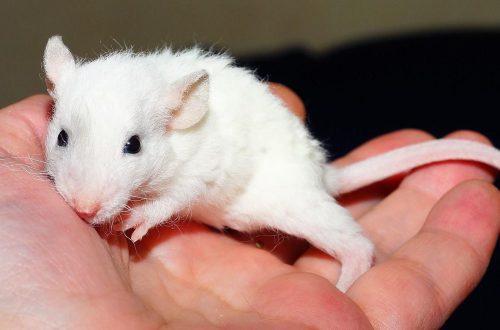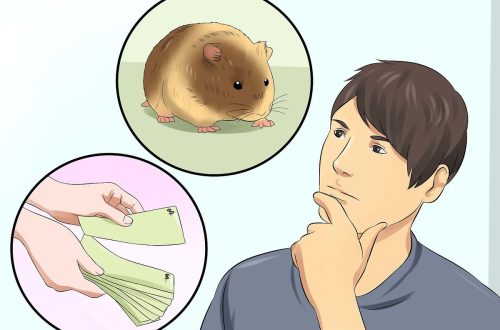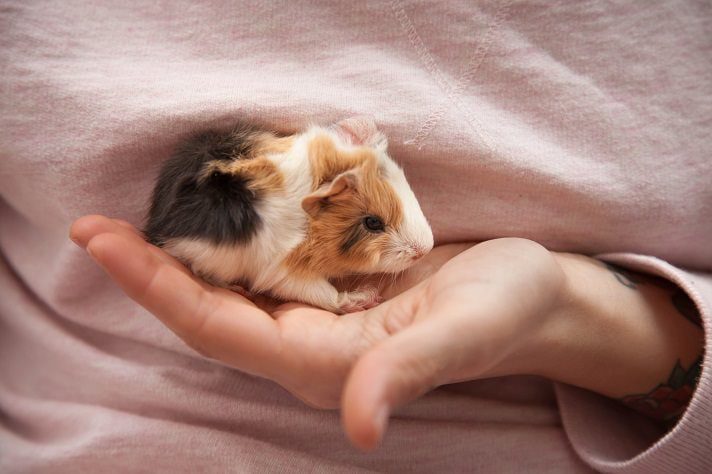
Forbairt muca guine nuabheirthe agus na rialacha maidir le tabhairt aire dóibh
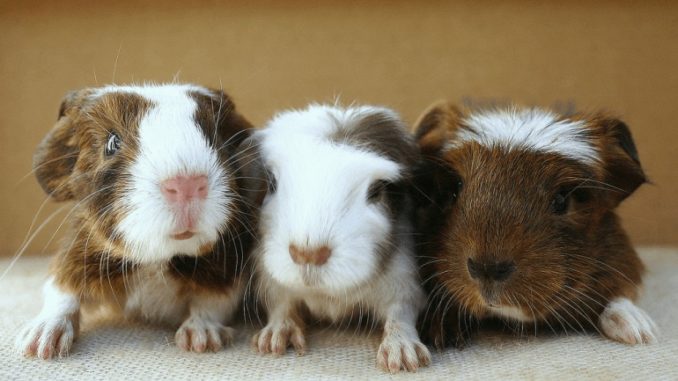
Newborn guinea pigs are fluffy, inquisitive creatures that quickly master new living conditions right from birth. Before deciding to breed fluffy rodents, the owner of the animal is advised to clarify all the possibilities for selling cubs, most often small animals are purchased to feed snakes or birds of prey.
The birth of guinea pigs can be planned when the owner decides to get offspring from a pet at home, or unexpected when careless keeping of heterosexual individuals, or acquiring a pregnant female. In any case, the care and maintenance of cute newborn guinea pigs and a nursing mother falls on the shoulders of the owner, who must be prepared for possible artificial feeding of babies and possible health problems of the female who has given birth and her children.
Clár ábhair
- What do newborn guinea pigs look like?
- What to do if the guinea pig gave birth
- Video: newborn guinea pigs
- Development of newborn guinea pigs by day
- Video: how a guinea pig grows from birth to 1 month
- When can you pick up babies
- When can guinea pigs be given away after birth
- Caring for newborn guinea pigs
- What to feed a baby guinea pig
- Video: newborn guinea pigs
What do newborn guinea pigs look like?
Unlike hairless, blind and completely defenseless cubs of domestic rats and hamsters, small guinea pigs are born small copies of their parents. The body of the babies is covered with smooth soft fur. Cubs have cut incisors, open eyes, tiny claws and excellent hearing. Trusting and courageous children of guinea pigs actively move around the cage almost from birth. Despite the fact that small guinea pigs look like adults, babies are in great need of maternal care and breastfeeding. Babies should not be separated from their mother before they are a month old.
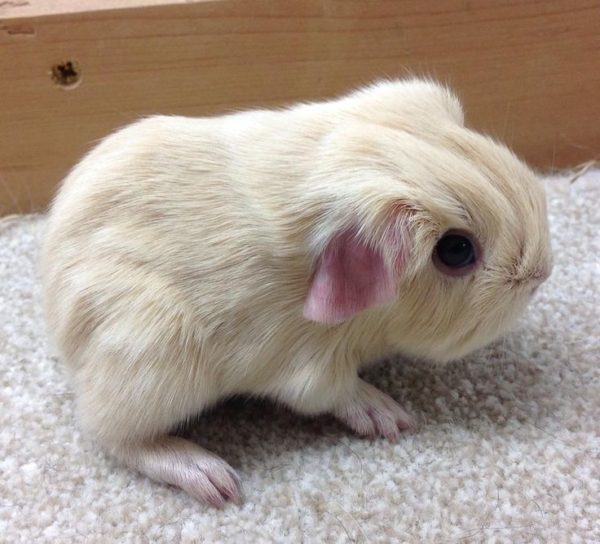
Cubs of guinea pigs are born into the world with a weight of 45-140 g, depending on the breed and the number of litters. The weight of a newborn less than 40 g is considered critical, most often babies die. The female guinea pig does not care for or feed sick or weak children. It is not possible to save such a cub on its own.
Guinea pigs bring a litter of 1-5 babies. Primiparous females often give birth to only one cub with a sufficiently large weight.
A nursing mother has only one pair of active nipples, but guinea pig milk is high in fat and nutrition. Therefore, in the absence of problems, the female manages to feed any number of newborns, the cubs suck milk in turn.
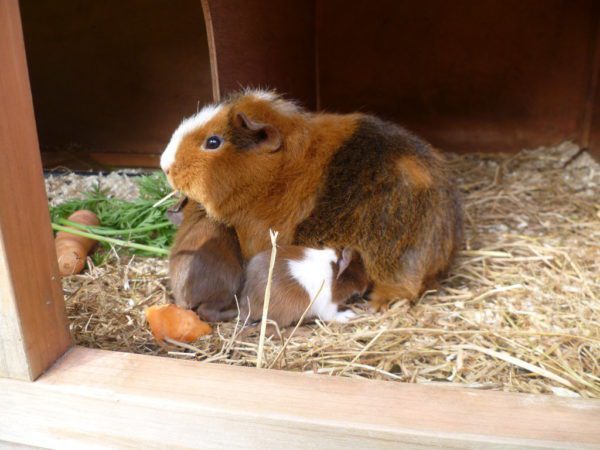
What to do if the guinea pig gave birth
A day after birth, it is necessary to examine the litter in the absence of the female and remove from the cage non-viable and inactive cubs with low weight, which are doomed to death.
This procedure must be carried out with clean hands, washed with laundry soap, without touching live piglets. Cleaning the cage in the first three days after birth is highly discouraged.
If before giving birth the male was in a cage with a pregnant female, it is urgent to resettle him to another dwelling. Males are capable of biting newborn cubs. A female who has just given birth within a day after giving birth can become pregnant again, which can cause the death of a newborn litter or female. Experts recommend mating guinea pigs for offspring no more than twice a year.
Quite often, females that have just given birth lack maternal instinct or experience postpartum shock. In which the mother tries to protect herself from the kids, hides in the corner, is in a depressed state.
To save newborns in such a situation, it is necessary to remove the adult from the cage and try to calm the frightened animal and offer your favorite treats. During the absence of the mother, a heating pad must be placed in the cage with the cubs in order to avoid hypothermia and the death of small pigs. Most often, an adult comes to life and becomes a caring mother.
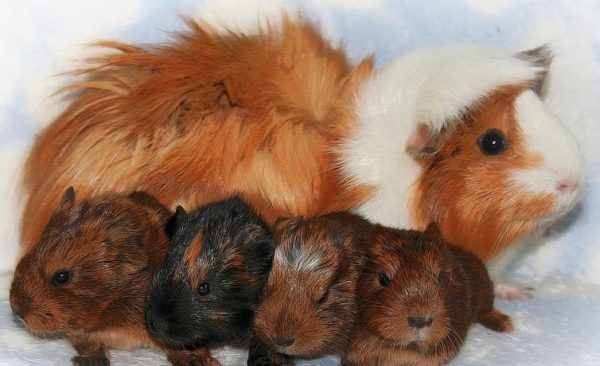
With multiple litters or insufficient production of breast milk, it is recommended to introduce cow, goat milk or cream into the diet of a nursing guinea pig to replenish the necessary nutrients in the body of the female.
Video: newborn guinea pigs
What to do if a guinea pig dies during childbirth
Sometimes the female guinea pig dies during childbirth. An ideal option for orphaned babies is considered to be a nursing guinea pig with cubs of the same age. In order for an adult to accept babies into the family, it is necessary to remove the female from the cage, rub the wool of the newborn with sawdust from the cage and place it in the center of the brood. Sometimes all babies are treated with camphor oil so that the female cannot smell someone else’s smell. After 20-30 minutes, you can put mommy back, who will be happy to feed new family members.
If it is not possible to find a lactating guinea pig, the responsibility for feeding the babies falls on the owner.
A newborn guinea pig eats every 2 hours during the day and 3 hours at night.
Artificial rearing of cubs is carried out by dripping with warm 10% cream with the addition of probiotics from an insulin syringe without a needle or with a squirrel brush. Cream can be replaced with powdered infant formula.
At the age of 7 days, dairy-free baby cereals can be carefully introduced into the diet of piglets. From birth, tiny animals in a cage should have a bowl of oatmeal flakes, pieces of apple and carrots, and hay so that the kids get used to adult nutrition.
Orphaned piglets are deprived of mother’s care, which consists in licking the abdomen and anus to stimulate the emptying of the bladder and intestines. In order to avoid the death of babies from peritonitis, due to rupture of the wall of the bladder or intestines, the owner of abandoned babies must, after each feeding, perform a very gentle massage of the tummy and anus with a wet swab dipped in boiled water or vegetable oil.
Development of newborn guinea pigs by day
Newborn guinea pigs grow quite quickly. Regardless of the initial weight at birth, a single litter calf can be born with a weight of about 100 g. On the first day, the body weight of a piglet remains unchanged. On the 2nd day after birth, the weight of the babies increases by 1 g. In the future, provided there is adequate nutrition and the absence of pathologies, the guinea pig cubs gain 3-4 g in weight daily. On the 5th day from the date of birth, weight gain is about 25-28 g, at the age of 2 weeks, body weight doubles relative to the value at birth.
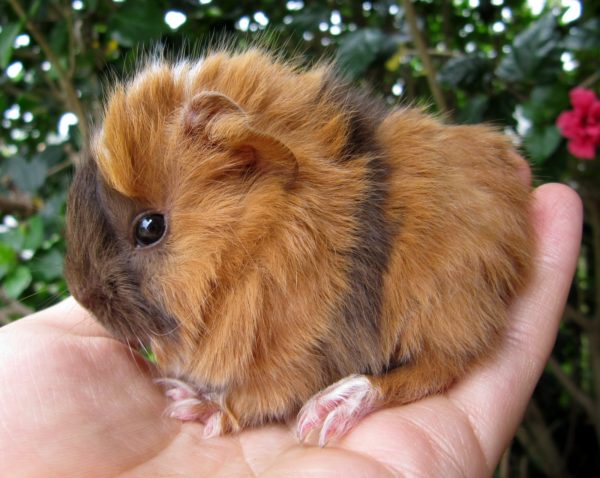
At 8 weeks, the young should weigh about 400 g, then the growth activity decreases.
A guinea pig cub becomes an adult at the age of 6 months, by this time the weight of males is 900-1200 g, females – 500-700 g.
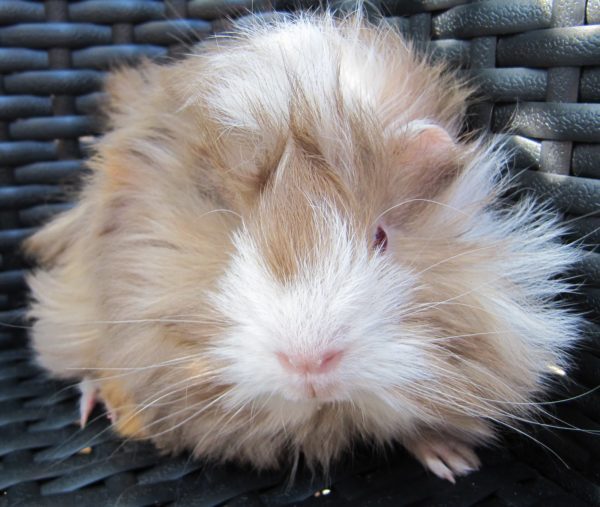
The formation of the skeleton and the development of muscle mass in young animals continues until they reach the age of 15 months.
Video: how a guinea pig grows from birth to 1 month
When can you pick up babies
Touching cute piglets before a week of age is undesirable. A nursing female may refuse or kill a cub with a strange smell. There is also a high probability of damage to the thin bones or internal organs of the baby in case of an accidental fall from the hands.
The little guinea pig is a very trusting but shy creature. It is highly recommended not to make harsh sounds in the presence of tiny animals. Frightened in childhood, animals remain shy or aggressive even into adulthood.
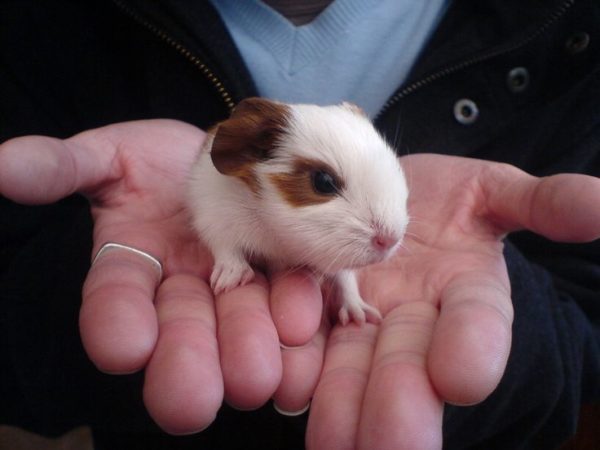
Week-old piglets should be regularly stroked on the back with a finger, fed with treats from the hands, without removing them from the cage. Such manipulations accustom piglets to the smell and voice of a person, forming a trusting relationship.
At the age of two weeks, you need to often take the babies in your arms, controlling the reaction of the babies.
Small guinea pigs are not allowed to be taken by the back. To take a tiny baby, you must very carefully bring your fingers under the tummy of the animal. A brave young guinea pig can easily enter the palm of its owner on its own. It is recommended to carefully pull the baby out of the cage and play with it. Do not frighten the baby with sudden movements or sounds, try to catch a small rodent. If the animal meows or shakes, it is worth returning the baby to the cage until the next time.
When can guinea pigs be given away after birth
Active lactation in a female guinea pig lasts 21 days, so at the age of 4 weeks, young animals can be weaned from their mother with the condition that the babies drink cream or cow’s milk for up to 5-6 weeks.
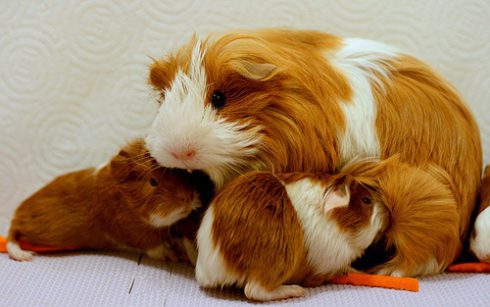
Early weaning of piglets from a lactating gilt adversely affects the health and growth of small animals. Removing cubs older than 2 months negatively affects the health of the female, who is forced to feed her already grown babies with milk. It is recommended to remove the most well-fed babies from the brood first, immediately forming heterosexual groups of young animals. Young males are separated from their mother at the age of one month in order to avoid covering an adult female with them.
At the age of one month, small guinea pigs can be given to new owners. Until this age, it is vital for young rodents to be near their mother for the correct formation of all organ systems, immunity and necessary skills.
Caring for newborn guinea pigs
Guinea pigs are most often good mothers who are happy to take care of newborn offspring. The owner of the fluffy brood needs to properly care for the female and her babies, creating optimal conditions for the growth and development of funny babies:
- the cage with mother and cubs should be spacious enough with a minimum distance between the bars to avoid damage to the delicate paws of babies;
- it is recommended to remove all ladders, shelves and hammocks from the cage;
- a few days after birth, it is necessary to wash the cage daily with a change of sawdust or hay. Disinfection of the cage and feeders is recommended once a week;
- the temperature in the room with animals should be at least +18 degrees in order to avoid hypothermia for babies, who often have wet fur after being licked by their mother;
- it is necessary to exclude direct sunlight and drafts on the cage with cubs;
- the cage must be equipped with a sufficient number of drinkers with clean drinking water and new feeders with food designed for the lactating female and her offspring;
- the atmosphere in the room with babies should be quiet and calm, newborn guinea pigs are very afraid of sudden sounds and movements.
What to feed a baby guinea pig
Newborn guinea pigs feed on their mother’s very fatty milk for the first three weeks of their lives. From the 3rd, inquisitive piglets are already eating adult solid food. Therefore, the cage should always have a bowl with cereal flakes, herbal granules, compound feed and nuts in sufficient quantities. Babies need to be fed only fresh and carefully selected products. Remove uneaten food from the cage daily to avoid poisoning the cubs.
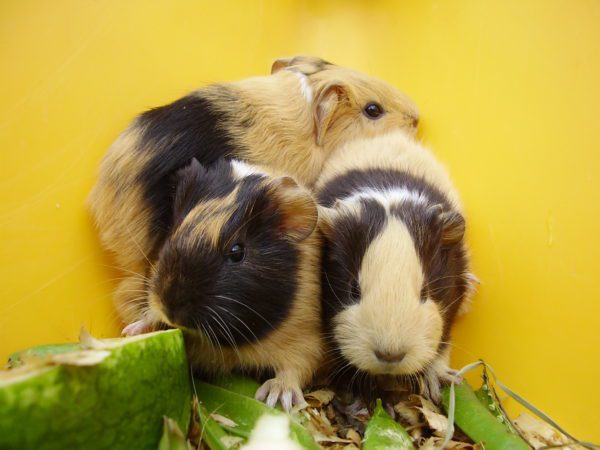
During feeding, guinea pig babies eat a small amount of adult litter, rich in vitamins B and K. These substances are necessary for the proper growth and development of young animals.
In a cage with a nursing mother and babies, there should always be special hay in sufficient quantities necessary for grinding teeth and intestinal motility of animals. Hay should be dry and smell good. Wet or rotten hay can kill the entire brood.
Young guinea pigs are happy to eat vegetables and fruits that are given to funny rodents in limited quantities: cabbage, carrots, apple, lettuce, bell pepper, summer season cucumber.
Guinea pig cubs are touching and affectionate fluffy lumps, which, after getting used to a person, bring many joyful and funny minutes from communicating with trusting and nimble kids.
Video: newborn guinea pigs
Forbairt muca guine nuabheirthe agus na rialacha maidir le tabhairt aire dóibh
4.3 (85.31%) 98 vótaí




